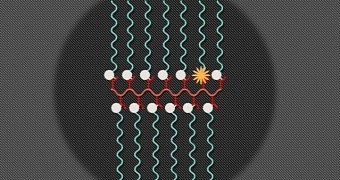We don't doubt that most people still believe that it will be ages before nanotechnology is actually ready for practical use, but the ETA might be shorter than you think, considering what the folks at MIT are up to.
Nanites capable of everything from cell regeneration to forming computerized implants automatically are still very much a pipe dream. Although those tape recorders made from DNA come pretty close.
However, nanoparticles can already be used for certain things, or that's what researchers from MIT have found.
A particular group from the institute have created a nanoparticle made of polymer chains that can bind to whatever sensors a doctor would need to introduce inside a patient.
On other words, the nanoparticles can be employed to improve the results of certain tests, and allow for the running of completely new ones.
How the nanoparticles work
As we said, they are made of polymer chains that can bind with various compounds or sensors. One test was binding particles with nitroxide and with Cy5.5, which would glow when encountering vitamin C.
The nitroxide grabs electrons from the vitamin and remains inactive in its presence, which is why the scientists don't get confused by the two different signals.
Thus, the nanoparticles were effectively turned into an MRI contrast agent. The attached photo shows the composition of the structure formed when several individual strands merge together. The researchers call this "branched bottlebrush polymer."
The breakthrough doesn't pave the way for superintelligent nanocomputers, since nanoparticles aren't the same thing as nanobots or nanites.
They do represent an important step in that direction. Not a paving stone, maybe, but a part of the process that will eventually allow us to create the building process to pave such a road.
The possible applications of the new nanoparticles
Even if we can't just spout nanites everywhere yet, the new nanoparticles could be used to monitor diseases, tumors and other such things. Maybe injury infections and the like.
Mixing multiple sensors can be done as well, meaning that you could, say, use the particles to measure oxygen radicals in a tumor (to see how aggressive it is) while checking for a bunch of other things at the same time. Even gather biochemical information on affected or healthy tissues, since the microscopic bottlebrushes can collect real-time data.
Unfortunately, we don't have an estimated time of arrival for any of these hypothetical procedures. It will probably be years, decades maybe, before they're ubiquitous.

 14 DAY TRIAL //
14 DAY TRIAL //